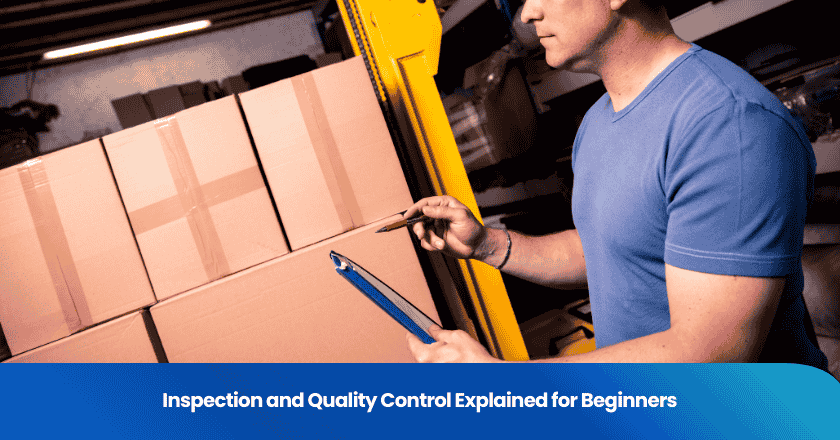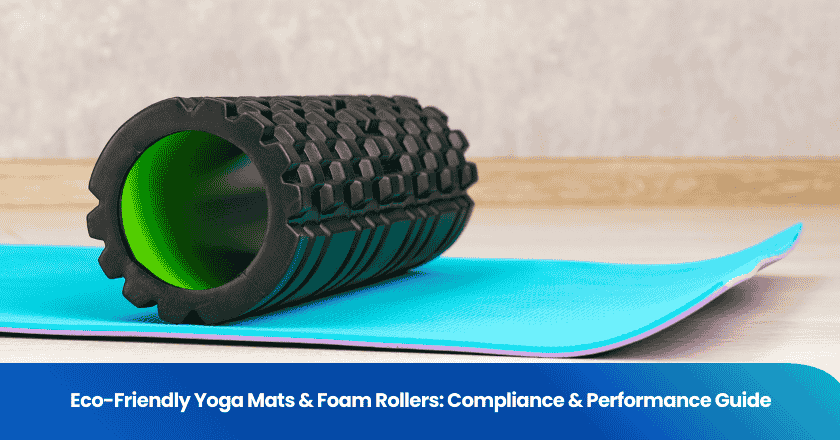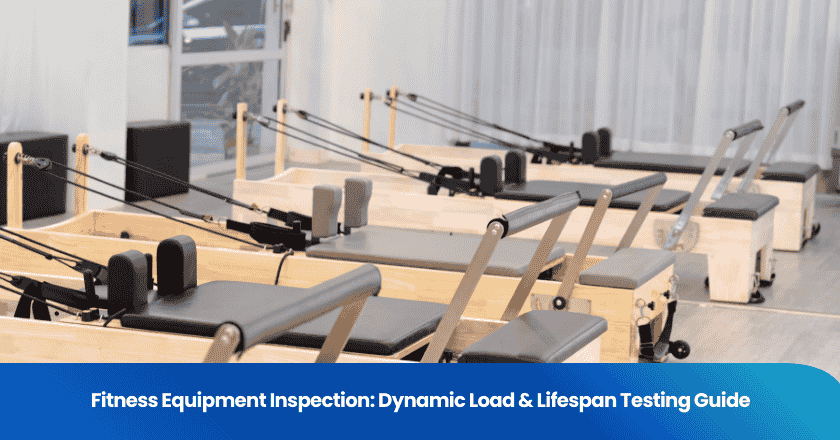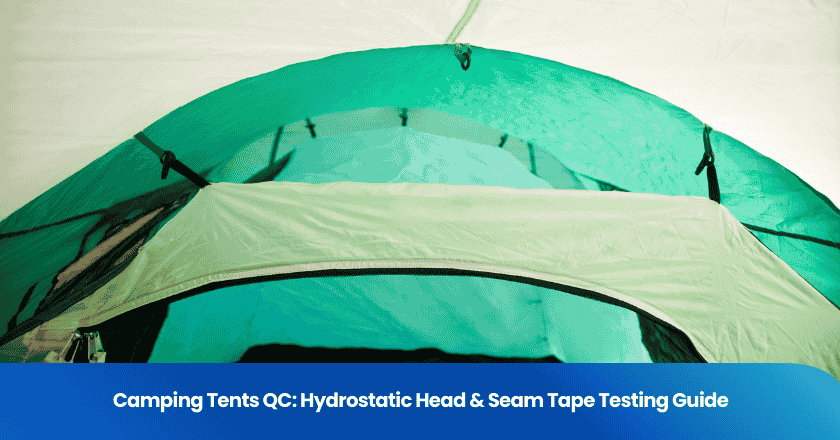
You encounter inspection and quality control every day, whether you realize it or not. Inspection refers to measuring, examining, and testing products or processes against specific standards. Quality control ensures the final product meets those standards before reaching you.
| Term | Definition |
|---|---|
| Quality Inspection | The process of measuring, examining, and testing products, parts, or processes against specific requirements or standards. |
| Quality Control | Focuses on identifying defects in the final product, ensuring it meets predefined specifications before delivery. |
Quality practices improve safety, regulatory compliance, and customer satisfaction across industries. You benefit from safer products, cost savings, and better service. Understanding these concepts helps you recognize their value in both professional and everyday settings.
Key Takeaways
- Quality inspection measures and tests products to ensure they meet specific standards, acting as a safeguard for reliable products.
- Quality control involves procedures that identify defects in finished products, ensuring they comply with company and customer standards.
- Both quality inspection and control are essential for safety, regulatory compliance, and customer satisfaction across various industries.
- Integrating quality control throughout production and using inspection to validate final products leads to fewer defects and greater customer trust.
- Understanding the roles of quality control and inspection helps you improve processes, reduce costs, and enhance overall product quality.
Inspection and Quality Control Basics
What Is Quality Inspection
You encounter quality inspection in many aspects of daily life and industry. This process involves measuring, examining, and testing products, parts, or services to ensure they meet specific requirements. You see quality inspection as a safeguard that helps companies deliver reliable products. When you buy a new phone or eat at a restaurant, quality inspection has already played a role in making sure what you receive matches expectations.
Quality inspection follows a series of steps designed to catch defects and confirm compliance with standards. Here is a typical process you might find in manufacturing or service industries:
- Define Standards: You set detailed quality standards for each product based on its intended use and functionality.
- Know the Specifications: You establish clear product specifications, including measurements and tolerances.
- Establish Numbers: You decide how many products will undergo quality control inspections.
- Testing Methodology: You define specific methods for inspecting and measuring products.
- Report Defects: You create a process for classifying and reporting defects.
- Communicate System: You ensure a strong communication system for reporting findings and addressing issues.
You find several types of quality inspection used across industries. These include:
- Final Random Inspection (FRI) / Pre-Shipment Inspection
- During Production Inspection (DUPRO)
- Pre-Production Inspection (PPI)
- First Article Inspection (FAI)
- Loading Inspection
Each type of quality inspection serves a unique purpose. For example, you use Pre-Production Inspection to check raw materials before production starts. During Production Inspection helps you monitor quality while manufacturing is underway. Final Random Inspection allows you to verify high-quality products before shipment.
Quality inspection ensures products match specifications and meet customer expectations. You check goods at various production stages, which helps prevent problems before they reach the consumer. In service industries, you use testing and inspection to evaluate service delivery and confirm adherence to quality standards. You identify weaknesses and validate compliance with regulatory requirements.
Tip: You can think of quality inspection as a checkpoint system. Each checkpoint helps you catch issues early and maintain consistent quality.
What Is Quality Control
Quality control refers to a set of procedures you use to make sure products or services meet the standards set by your company and your customers. You review quality at every stage of production, focusing on defined requirements. According to international standards like ISO 9001, you create, implement, maintain, and continuously improve a Quality Management System (QMS) to guarantee consistent quality in products and services.
You use quality control methods to monitor and manage quality throughout the entire process. These methods include inspections, testing, statistical analysis, and corrective actions. You apply quality control methods to materials, components, finished products, and even packaging and labeling.
Here is a table showing the main activities involved in the quality control process:
| Step | Description |
|---|---|
| 1. Define Quality Standards and Requirements | You set specifications for materials, components, and finished products, and create a quality control plan. |
| 2. Supplier and Incoming Material Inspection | You evaluate suppliers and test raw materials against predefined standards. |
| 3. In-Process Inspections and Monitoring | You establish checkpoints during production and use real-time monitoring. |
| 4. Final Product Inspection | You conduct comprehensive inspections of finished products for defects and functionality. |
| 5. Packaging and Labeling Inspection | You ensure proper packaging and accurate labeling of products. |
| 6. Documentation and Traceability | You record inspection results and maintain traceability records. |
| 7. Manage Defects and Corrective Actions | You analyze defects and implement corrective actions. |
| 8. Compliance and Certification | You conduct audits and obtain necessary certifications. |
| 9. Continuous Improvement | You use data to identify improvement areas and apply quality improvement methodologies. |
You rely on quality control methods to ensure safety and compliance, especially in industries where products could potentially harm people. You see legal requirements for quality control in sectors like pharmaceuticals, food, and medical devices. You must cover the entire value chain to guarantee maximum safety.
You also use quality control to improve customer satisfaction. When you implement strong quality control methods, you reduce defects, lower costs, and build trust with your customers. You create a system that supports continuous improvement, helping you adapt to changing standards and customer needs.
Note: You play a key role in maintaining quality by following established procedures and using effective quality control methods. Your attention to detail and commitment to standards help your organization deliver safe, reliable products and services.
Differences Between Inspection and Quality Control
Roles in Quality
You play a vital role in maintaining quality within any organization. Quality control and inspection teams work together, but each group focuses on different aspects of the process. You see quality control as a system that identifies defects in finished products and ensures compliance with established standards. You rely on inspection to measure, examine, and test products at specific checkpoints.
You notice that quality control emphasizes finding and correcting defects after production. You use inspections and tests to verify that products meet requirements. Quality assurance, which often works alongside quality control, aims to prevent defects by optimizing processes before production begins. You analyze production methods and address root causes to improve overall quality.
Here is a summary of the main differences in roles:
- Quality control detects and corrects defects in the final product.
- Quality assurance prevents defects by establishing and improving processes.
- Quality control inspectors focus on flaws in products.
- Quality assurance technicians analyze production processes to enhance quality.
You recognize that both teams contribute to delivering reliable products, but their responsibilities differ. Quality control specialists use their expertise in measurement and testing to validate product quality. Inspection personnel often include dedicated team members who focus on testing and examination.
| Aspect | Quality Control (QC) | Inspection Personnel |
|---|---|---|
| Timing | During and after production | During and after production |
| Focus | Identifying defects in finished products | Identifying defects in finished products |
| Approach | Reactive, verification and validation | Reactive, focused on testing and inspection |
| Responsibility | Dedicated specialists trained in testing | Typically involves dedicated personnel |
| Involvement | Specific expertise in measurement and testing | May involve various team members |
Tip: You can improve quality by understanding how each team contributes to the overall process. You build stronger systems when you recognize the unique strengths of quality control and inspection personnel.
Process vs. Output
You often wonder how quality control and inspection differ in their approach to quality. You find that quality control integrates quality into every stage of production. You monitor materials, components, and processes to ensure standards are met from start to finish. You use checkpoints and real-time monitoring to catch issues early and maintain consistent quality.
Inspection, on the other hand, focuses on the final output. You verify that finished products meet specifications before they reach customers. You use different types of inspection to check quality at various stages:
| Type of Inspection | Focus Area |
|---|---|
| Pre-Production Inspection | Ensures raw materials meet standards |
| In-Process Inspection | Monitors quality during production |
| Final Product Inspection | Verifies finished products before shipping |
You see that quality control builds quality into the process, while inspection acts as a safeguard for the final product. You rely on both approaches to deliver safe, reliable goods. You use quality control to prevent problems and inspection to catch any remaining issues before products leave the facility.
You benefit from a system that combines both methods. You reduce defects, improve safety, and increase customer satisfaction. You create a culture of continuous improvement by using data from quality control and inspection to refine processes and raise standards.
Note: You achieve the best results when you integrate quality control throughout production and use inspection to validate the final output. You ensure that every product meets expectations and maintains high standards.
Importance of Inspection and Quality Control
Safety and Standards
You rely on inspection and quality control to maintain safety and meet strict standards in every industry. These processes help you prevent defects and ensure products comply with regulations. When you follow quality standards, you reduce risks and avoid costly mistakes. Inspection and quality control play a key role in industries such as pharmaceuticals, automotive, and medical devices. You see how a structured approach to inspections leads to better safety management and regulatory compliance.
- You prepare for inspections by setting clear quality standards and organizing your team.
- You execute inspections with attention to detail, which helps you respond quickly to any issues.
- You improve safety management practices by staying ready for regulatory checks.
You can see the impact of inspection and quality control in the following table:
| Mechanism | Evidence |
|---|---|
| Regulatory Compliance | Compliance with ISO 9001 and FDA regulations prevents defects that could lead to recalls. |
| Cost Containment | Automotive recalls cost over $470 per vehicle, which could be mitigated by inspections. |
| Risk Reduction | In medical devices, undetected issues can lead to significant liabilities, highlighting the need for inspections. |
| Continuous Improvement | Data from inspections supports SPC and Six Sigma, helping to identify issues before they escalate. |
You notice that effective inspection and quality control systems help you avoid penalties and lost business relationships. You save costs by catching defects early and preventing expensive rework or recalls. Digitization of inspection records also reduces labor costs and minimizes errors, making your processes more efficient.
Customer Satisfaction
You build customer satisfaction by delivering products that meet quality standards every time. Inspection and quality control help you identify defects before products reach customers, which enhances reliability. You create trust by maintaining consistent quality and meeting expectations.
| Element | Contribution to Customer Satisfaction |
|---|---|
| Inspection | Identifies defects before products reach customers, enhancing reliability. |
| Consistency | Builds customer trust through reliable product quality. |
| Cost Reduction | Avoids costly rework and dissatisfaction, maintaining competitive edge. |
| Continuous Improvement | Analyzes data to enhance processes, leading to better quality outcomes. |
| Customer Loyalty | Proactive quality measures lead to increased loyalty and positive feedback. |
You understand the importance of quality inspection in building long-term trust. When you address issues early, you save resources and maintain your reputation. Rigorous quality control and testing prevent failures that could damage customer trust. You handle problems transparently, which helps you retain loyal customers and strengthen your brand image.
Tip: You can achieve higher customer satisfaction and safety by integrating inspection and quality control into every stage of your process. Consistent quality standards lead to fewer defects, lower costs, and greater customer loyalty.
Quality Assurance Inspection in Industries
Manufacturing
You encounter quality assurance inspection at every stage of manufacturing. You start with incoming quality control, where you verify raw materials before production begins. You use pre-production inspections to prevent future quality issues. You rely on in-process quality control to monitor product quality during manufacturing, allowing you to detect defects early. You finish with final quality control, ensuring products meet safety and quality standards before distribution. Outgoing quality control confirms that only compliant products reach customers.
- Pre-production inspections check raw materials.
- In-process quality control monitors production.
- Final quality control validates finished goods.
- Outgoing quality control ensures compliance before shipment.
You use testing methods such as voltage tolerance checks for electronic components, torque verification in automotive assembly, and ingredient traceability in food manufacturing. You train operators on Six Sigma principles to reduce process variability and improve product quality.
| Example | Description |
| Electronic Components | You define standards for voltage tolerance to meet performance expectations. |
| Automotive Assembly | You verify torque, test electrical systems, and check alignment. |
You build reliability by integrating quality assurance inspection throughout the manufacturing process.
Food Industry
You apply quality assurance inspection to protect consumers and comply with regulations. You begin with raw material inspection and supplier management, ensuring high-quality ingredients through strict protocols. You use food safety testing to monitor for contaminants and critical parameters like temperature and pH. You implement traceability and recall systems to track products and respond quickly to issues.
- You conduct internal and external audits to evaluate compliance.
- You follow regulatory frameworks for food safety.
- You train employees and encourage continuous improvement.
- You perform structured food quality inspections to maintain standards.
You see the consequences of inadequate quality assurance in food industry case studies. The 2008 Chinese Milk Scandal led to major health issues due to melamine contamination. The Listeria outbreak in deli meats resulted in deaths and hospitalizations. These examples highlight the importance of rigorous testing and quality assurance inspection.
| Case Study | Consequence | Year |
|---|---|---|
| 2008 Chinese Milk Scandal | Major health issues and deaths | 2008 |
| Listeria Outbreak in Deli Meats | Deaths and hospitalizations | 2023 |
You protect public health and build trust by maintaining strict quality assurance inspection protocols.
Construction
You use quality assurance inspection to ensure safety and durability in construction projects. You assign roles and responsibilities for approvals and documentation. You implement a construction quality assurance plan to apply quality principles consistently. You conduct regular audits and inspections at critical stages. You assess training and competency to confirm personnel understand quality requirements.
| Procedure/Aspect | Description |
|---|---|
| Assigning Roles and Responsibilities | You identify authority for approvals and documentation. |
| Construction Quality Assurance Plan | You apply quality principles across all project phases. |
| Regular Audits and Inspections | You evaluate processes for effectiveness and compliance. |
| Material Inspections and Testing | You verify materials meet requirements through various testing methods. |
| Non-conformance Reporting | You address deficiencies through documentation and correction. |
You use testing methods such as non-destructive testing, structural load testing, and visual inspections to verify material quality and structural integrity. You minimize defects and rework, saving costs and meeting timelines. You enhance client satisfaction and strengthen your reputation by maintaining high quality standards.
You prevent structural failures and safety hazards by prioritizing quality assurance inspection and continuous improvement.
You see clear differences between inspection and quality control, yet both work together to deliver safe, reliable products. The table below highlights their unique roles:
| Feature | Quality Assurance (QA) | Quality Control (QC) |
|---|---|---|
| Primary Focus | Process-oriented: Prevent defects | Product-oriented: Detect defects |
| Purpose | Ensure effective processes | Verify finished product quality |
| Timing | Proactive: Before production | Reactive: After production |
| Responsibility | Management, Quality Teams | Inspection Teams, Inspectors |
| Activities | Audits, training, SOP creation | Inspections, testing, defect fixing |
| Goal | Build quality into process | Catch defects before delivery |
You gain personal and professional growth by understanding these basics:
- You set measurable objectives and define clear roles.
- You enhance skills through practical inspection procedures.
- You foster continuous improvement and data-driven decisions.
Recognize inspection and quality control in everyday products. You build expertise and confidence by mastering these essential concepts.
FAQ
What is the difference between quality assurance and quality control?
| Quality Assurance | Quality Control |
|---|---|
| Prevents defects | Detects defects |
| Focuses on process | Focuses on product |
You use quality assurance to build quality into processes. You use quality control to check finished products.
Why do you need inspection in every industry?
Inspection helps you catch defects early. You protect customers and meet safety standards. You avoid costly recalls and maintain your reputation. You improve product reliability and build trust with your clients.
How often should you perform quality inspections?
You set inspection frequency based on risk, regulations, and product type. You may inspect every batch, at key production stages, or before shipment. Regular inspections help you maintain consistent quality.
Can you use technology to improve quality control?
You use digital tools to automate inspections, record data, and analyze trends. You reduce errors and save time. You improve traceability and make faster decisions with real-time information.
What skills do you need for quality inspection?
- Attention to detail
- Knowledge of standards
- Ability to use measuring tools
- Communication skills
You develop these skills through training and practice. You improve your effectiveness as an inspector.
Grow your business with TradeAider Service
Click the button below to directly enter the TradeAider Service System. The simple steps from booking and payment to receiving reports are easy to operate.




